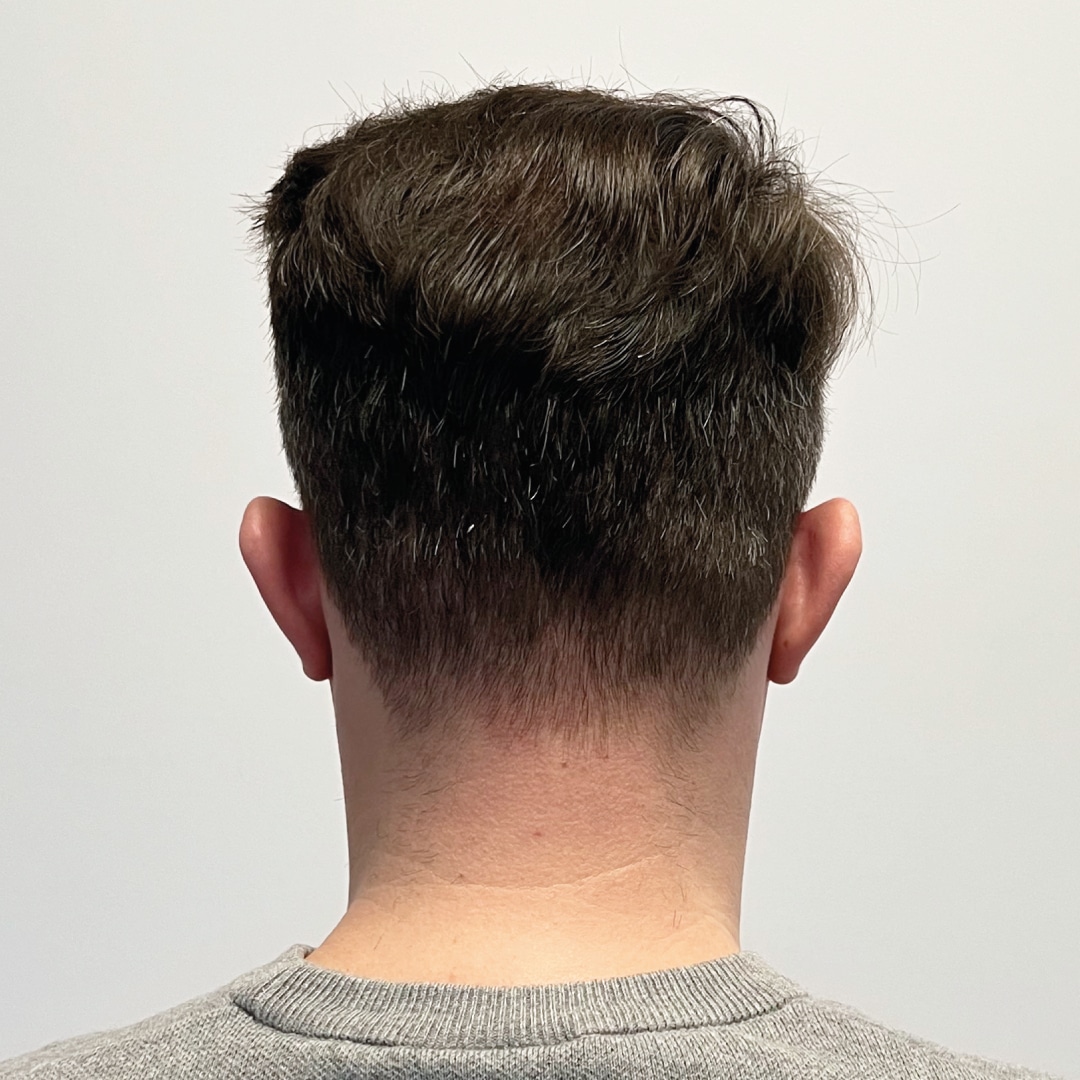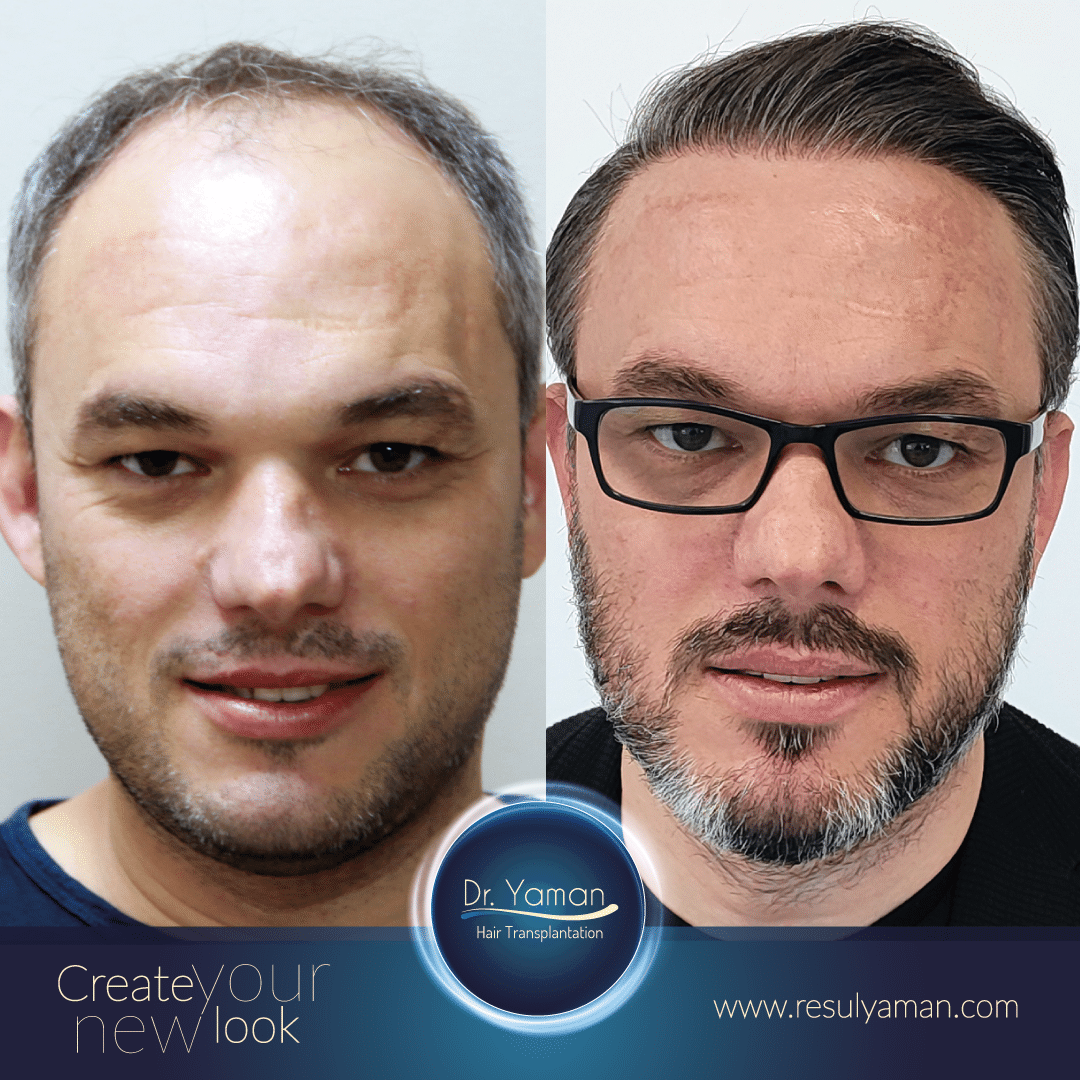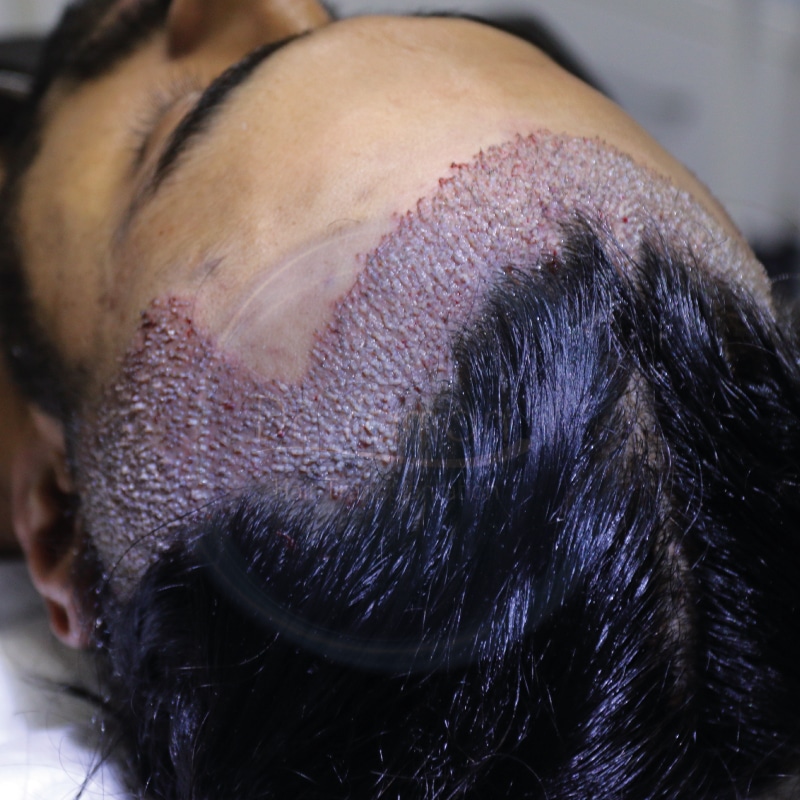There are so many misconceptions or unknowns relating to hair transplants that I want to put people straight and give them the facts. One of the largest grey areas and questions I see is, does donor area hair grow back?
The donor hair is what is harvested and transplanted to your areas of hair loss during the surgery. Naturally, the surgery just pulls hair out so it should grow back right? No. I hate to be the bearer of bad news, but people saying that donor hair grows back are wrong and I explain why below.
Understanding the Donor Area
When we refer to the “donor area” we mean the part of your scalp where hair follicles are taken from as part of your FUE or DHI hair transplant.
This is typically at the back of your scalp as this is where your hair is usually the thickest and best quality. Before your surgery, your surgeon will assess your scalp and hair loss condition to determine the best donor area.
Typically, hair is harvested in a wide area as opposed to a single patch so to minimize any thinning effect that could be seen due to a lack of donor hair regrowth.
Hair Regrowth in the Donor Area
I have seen many websites speak of donor hair magically growing back but this just isn’t how FUT and FUE surgeries work. During these hair transplant procedures, the entire hair follicle is removed – not just individual hairs.
That’s the key difference. As the entire follicle is removed, you are removing the thing that prompts hair growth so essentially you are left with just…skin. If the procedure simply plucked hairs out, then yes, donor hair would regrow.
But that doesn’t happen, and follicle harvesting is what gives FUT and FUE surgeries such amazing results – just check our before and after hair transplant results to see for yourself.
The only way that hair can realistically grow back in the donor area is if the follicle wasn’t harvested properly. And if this is the case, the surgery wouldn’t be a success anyway.
A lack of hair regrowth isn’t an issue
Despite this seemingly bad news, I want to assure you that 99% of the time the fact that donor hair doesn’t grow back isn’t an issue.
Your hair transplant surgeon will discuss these finer points with you and this includes the donor site and how they will harvest the hairs. A careful “cherry picking” method is typically used where hairs are taken from random donor patches on the back of your head – not just one patch.
This means that as opposed to having one single bald patch where thousands of hairs have been taken, you have tiny patches dispersed over a wider area. Once your hair has grown back, you cannot notice any difference. So, providing the donor hair is taken from a spread-out area, it doesn’t matter that it won’t grow back.
Read Next: Can You Transplant Hair From Another Person?
Donor Area Maintenance and Care
After your FUE surgery, the donor area may be a little sore and tender. You may also experience swelling and scabbing. Don’t worry – this eventually goes away and the initial discomfort should only last for a few days, and scabbing should have disappeared in 7-11 days.
It is important to look after your donor area and make sure that it remains sterile to avoid infection. Refrain from touching it, but most importantly – follow your hair transplant surgeon’s aftercare plan!
Alternative Solutions for Hair Restoration
If you are worried that the donor area won’t look right after your hair transplant there are alternatives to consider:
- Finasteride
- Minoxidil
- Micropigmentation
Finasteride and Minoxidil are both common hair restoration drugs that have been used for many years. They are readily available and can promote hair growth in areas of hair loss. The downside is that you have to take the medication indefinitely, and it can cause side effects.
Micropigmentation is a form of tattooing to cover balding areas and patches of hair loss caused by alopecia. In the right circumstances, this can look effective and blend in naturally with your real hair.
If the Follicle is Completely Removed, Hair Will Not Grow Back
For FUE and FUT surgeries where the hair follicles are completely removed, donor hair will generally not grow back. It is only if the follicle wasn’t completely removed that hair could grow back.
However, as you can see from the above, due to the surgical process and the strategic harvesting of donor hair, this shouldn’t cause a problem and once your hair grows back to its original length, there should be no noticeable difference.
Related Reading:
 WhatsApp
WhatsApp Get Mail!
Get Mail!
 English
English Italiano
Italiano Español
Español Türkçe
Türkçe Português
Português Français
Français Deutsch
Deutsch عربي
عربي






